Welcome to Taiwan, Formosa!
TAIWAN
Formosa, meaning “Beautiful Island” in Portuguese, was the name given to Taiwan when Portuguese explorers arrived in the 16th century and were struck by its verdant beauty. Located in eastern Asia, Taiwan is a place of immense diversity and unique charm. From its forested mountains and hilly countryside to its coastal plains and basins, Taiwan offers a wide range of landscapes and experiences. Whether you prefer exploring modern cities or traditional towns, Taiwan has something for everyone. With its rich cuisine, enchanting scenery, and friendly people, Taiwan is a vibrant destination waiting to be discovered. Join us as we explore this amazing island, uncover its unique charms, and fall in love with its beauty!
Taiwan is strategically located in the heart of Asia, surrounded by the sea. It lies in the eastern part of the Asian continent, along the southeast coast of the Asian mainland, and on the west coast of the Pacific Ocean. It is situated south of the Japanese archipelago and north of the Philippines. Taiwan faces Fujian Province across the Taiwan Strait to the west and the Philippines across the Bashi Channel to the east. Positioned centrally in the East Asian island arc, Taiwan serves as a vital transportation hub for sea and air traffic in the Asia-Pacific region.
Taiwan’s geographic coordinates are approximately between 23 degrees 30 minutes and 25 degrees 30 minutes north latitude, and between 120 degrees and 122 degrees east longitude. It spans a total area of about 36,000 square kilometers (14,400 square miles). The Tropic of Cancer runs through the central and southern parts of Taiwan, significantly influencing its climate and giving it subtropical characteristics. Being located in the Pacific Ring of Fire and on the eastern edge of the Asian continent, Taiwan frequently experiences earthquakes and typhoons.
Taiwan’s climate is primarily influenced by monsoons and terrain, resulting in a subtropical monsoon climate. It is divided into a “subtropical monsoon climate” north of the Tropic of Cancer, which passes through Chiayi County and Hualien County, and a “tropical monsoon climate” south of it. Overall, Taiwan experiences distinct seasons, with hot and humid summers, relatively cool winters, and mild springs and autumns.
During the summer, the southwest monsoon prevails, with the average temperature in the hottest month (July) reaching around 28 degrees Celsius. In winter, the northeast monsoon prevails, with average temperatures in the coldest month (January or February) around 15 degrees Celsius in the north and around 19 degrees Celsius in the south.
Taiwan is humid and receives abundant rainfall, with an average annual precipitation of about 2500 millimeters, more than three times the world average. Rainfall varies throughout the year, with the north and east experiencing rain year-round, while the central and southern regions have distinct wet and dry seasons, with the rainy season mainly concentrated from June to August. Additionally, Taiwan is located in the path of typhoons generated in the Pacific Ocean, making June to September the typhoon season.
Taiwan’s Winter (December to February):
Winter in Taiwan is cold and damp, with temperatures ranging from about 10 to 20 degrees Celsius. From early December to late March the following year, cold air from the Siberian high-pressure area (cold air mass) moves southward (cold surge), causing a sudden drop in temperature. In high-altitude mountainous areas, temperatures are even lower, and snowfall may occur. Winter is a good time to enjoy flowers, as plum blossoms and cherry blossoms bloom, and various flower festivals are held throughout the country. Additionally, winter is the best time to enjoy hot springs in Taiwan, as major hot spring resorts often attract tourists seeking to relax and unwind.
Taiwan is a long and narrow island, approximately 394 kilometers long from north to south and with a maximum width of about 144 kilometers. It has a coastline of approximately 1,139 kilometers, surrounded by the sea on all sides, resembling a sweet potato in overall shape.
The terrain of Taiwan is rugged and steep, with two-thirds of the island covered by high mountains and forests. The Central Mountain Range, known as the “backbone of Taiwan,” runs north to south, dividing the island into eastern and western parts. Rivers flow east and west, with short, steep rivers that erode vigorously, creating Taiwan’s diverse and complex terrain. This is due to Taiwan’s location at the junction of the Eurasian Plate and the Philippine Sea Plate, where the plates are squeezed together, leading to abundant volcanic geology in Taiwan, with over a hundred perceptible earthquakes annually and abundant hot spring areas.
Taiwan’s main terrain can be classified into five categories: mountains, hills, plains, basins, and plateaus. Mountains and hills account for about 70% of the total area, while plains and basins are the main areas of human habitation. Due to the eastern position of the Central Mountain Range, the western plains are wider and more densely populated, while the eastern plains are narrower with relatively lower population density.
Mountainous Terrain:
Taiwan’s mountains are mainly located in the central and eastern parts of the island, with five major mountain ranges. Among them, the Central Mountain Range is the backbone of Taiwan, running from north to south and serving as the watershed for most rivers. Taiwan is an island with many high mountains, with nearly 270 peaks over 3,000 meters in height, making it one of the islands with the highest mountain density in the world. The highest peak is Yushan, which rises to 3,952 meters above sea level, making it the highest peak in Northeast Asia.
Despite a tenfold increase in population over the past 200 years, and significant expansion of industry and agriculture, Taiwan still retains its spectacular high mountains and dense forests. More than 58% of Taiwan’s land area is covered by various forms of forests or bamboo groves. In terms of the percentage of total land area, Taiwan’s forest area is twice that of Norway and nearly five times that of the UK. The mountainous terrain in Taiwan also brings diversity to its climate and vegetation, creating magnificent mountain landscapes.
Hills and Plateaus:
Hilly areas in Taiwan are widespread, especially in the western foothills between the mountains and plains, creating undulating terrain. These hilly terrains offer rich natural scenery and ecological environments. However, these areas are easily developed due to their lower elevation and are thus densely populated. However, hilly terrain is also vulnerable to human development and requires more attention to soil and water conservation to avoid disasters. Plateaus were formed by the ancient alluvial fans of rivers, later uplifted and cut by rivers, forming flat tops with heights of about 1,200 meters. Plateaus are distributed from north to south in Taiwan, with few rivers on the plateaus, making irrigation difficult and unsuitable for paddy cultivation. Therefore, in some plateaus, ancestors have developed many ponds to store water for irrigation of farmland.
Volcanic Activity:
Due to its location in the Circum-Pacific seismic belt, Taiwan has experienced volcanic activity, forming several volcanic mountain ranges, including the Keelung Datun Volcano Group in the north, the Coastal Range Volcano Group in the east (including Green Island and Orchid Island), and the Penghu Volcano Group in the offshore islands. There is currently no apparent active volcanic activity on the main island. The characteristic of volcanic terrain is conical or plateau-shaped mountains, which are different from those formed by magma eruption and plate squeezing, showing unique features. Taiwan’s volcanic terrain is also a tourist destination, such as the Seven Star Mountain in the Datun Mountain area of Taipei and Yangmingshan National Park.
Plains and Basins:
Although plains and basins are small in Taiwan, they are densely populated areas.
The plains are densely populated and economically prosperous areas in Taiwan, and they are also the main areas for agricultural and urban development. The Jiannan Plain in southern Taiwan is the largest plain in Taiwan and is known as the “granary of Taiwan,” providing a large amount of rice. Other plains include the Changhua Plain in central Taiwan, the Pingtung Plain in the south, the Lanyang Plain in the northeast, and the Hualien-Taitung Valley in the east. These plains are formed by rivers flowing out of the mountains, providing rich land resources and becoming important areas for agriculture.
Basins in Taiwan are mainly divided into extensional and compressional types, forming the Taipei Basin in the north and the Taichung Basin in the central-southern region. Basin terrain is conducive to human habitation, agriculture, and transportation, with the Taipei Basin becoming the political, economic, and cultural center of Taiwan. Basins are scattered between mountains, hills, and plateaus, with cities like Taipei and Taichung located within them. The surrounding mountains or hills of the basins make ventilation difficult, leading to summer heat, but they also provide a good terrain barrier, reducing the risk of disasters. Major basins include the Taipei Basin in the north, the Taichung Basin and Puli Basin in the central region, and the Taiyuan Basin in the east.
Outlying Islands:
Taiwan’s outlying islands include the Penghu Islands, Kinmen Islands, Matsu Islands, Green Island, and Orchid Island, scattered in the waters around Taiwan. These islands have relatively gentle terrain, contrasting with the main island of Taiwan.
The Penghu Islands consist of over 90 islands, known for their charming coastal scenery, white sandy beaches, and rich marine ecology. The Kinmen Islands are located northwest of Taiwan, once a military stronghold, now preserving rich historical and cultural heritage, attracting history enthusiasts and tourists. The Matsu Islands include Nangan, Beigan, Dongyin, and Juguang, with magnificent coastlines and abundant cultural assets. Green Island and Orchid Island are located off the southeast coast of Taiwan, loved by tourists for their unique geological landscapes, indigenous cultures, and rich marine ecology. These outlying islands offer diverse natural landscapes and unique cultural colors, becoming highlights of Taiwan’s tourism.
Hydrology:
Taiwan’s hydrological terrain is diverse, mainly consisting of river networks originating from the Central Mountain Range and lakes distributed throughout the island. The Central Mountain Range is Taiwan’s main mountain range, with rivers like the Zhuoshui River and the Tamsui River originating from it, winding down the mountains to form a complex river valley system. The rivers are mostly short and rapid, with exposed rocks and flat sandy riverbeds, forming various flow patterns, and common waterfalls, potholes, and strange rocks in the upper reaches. The swift rivers in the mountainous areas carve out steep river valley terrain, forming magnificent waterfalls and cliffs.
In various parts of Taiwan, rivers form gentle estuarine zones between mountains and plains, flowing into the Taiwan Strait. In addition, rivers in western Taiwan flow through the plains, forming a network of intertwined river channels, supporting agricultural and urban development. Taiwan has relatively few lakes, with Sun Moon Lake being the largest freshwater lake, located between mountains, presenting a charming lake landscape.
Overall, Taiwan’s hydrological terrain presents a rich and diverse landscape, from high mountains to plain river valleys, to lake areas, forming a unique geographical pattern and providing Taiwan with abundant water resources.
Beautiful Coastline:
Taiwan is surrounded by the vast Pacific Ocean, boasting approximately 1,566 kilometers of coastline. The coastline features capes and rocky shores in the north, sandy beaches, sand dunes, lagoons, and muddy flats in the west, coral reef coasts in the south at the Hengchun Peninsula, and fault coasts in the east with steep slopes and many cliffs. The coastal areas of the west and north are known for their flat plains, which are important economic areas. The east coast faces the Pacific Ocean and is famous for its stunning scenery, spectacular cliffs, and rugged terrain.
Nature Reserves and National Parks:
Taiwan has numerous nature reserves and national parks dedicated to protecting its rich natural ecology, unique geographical landscapes, and culturally valuable areas. These areas play a vital role in Taiwan, not only as treasure troves of natural ecology but also as places for people to relax, sightsee, and receive environmental education.
Taiwan has as many as nine national parks, covering various terrains on the island, including high mountains, hills, plains, and coastlines. Each national park has its unique features, offering a wealth of outdoor activities and sightseeing opportunities. Taroko National Park in the east is famous for its spectacular marble canyons and pristine wilderness areas; Kenting National Park in the south boasts diverse marine ecology and is a popular diving destination; Yangmingshan National Park is known for its volcanic terrain, hot springs, and cherry blossom viewing spots; and Shei-Pa National Park is famous for its high mountain scenery.
These reserves and parks are not only treasure troves of nature but also cultural treasures, embodying the Taiwanese people’s love and respect for their land. We sincerely invite you to explore these rich lands and gain a deeper understanding of Taiwan’s diverse natural and cultural landscapes through visits to nature reserves and national parks. For more information, please refer to the Taiwan Tourism Bureau’s introduction.
Taiwanese people are renowned for their warmth, hospitality, creativity, and resilience. Their diversity stems from the historical immigration backgrounds of different ethnic groups, blending diverse influences from China, Japan, the Netherlands, and others, forming a unique cultural landscape. They maintain respect for traditional values while actively embracing modern changes, creating a unique human landscape and a rich cultural fusion. The population of Taiwan is mainly composed of five ethnic groups:
Indigenous Peoples:
Taiwan’s indigenous ethnic groups have a deep history and rich cultural heritage. These tribes have existed on the island for thousands of years, making them among the earliest inhabitants of Taiwan. Although indigenous peoples make up only one-fifth of Taiwan’s total population today, their culture is an indispensable part of the land.
There are officially recognized sixteen indigenous tribes, distributed in the mountains and lowlands, all belonging to the Austronesian language family. These tribes have unique languages, traditional arts, outdoor activities, and rich religious beliefs. In the past, mountain indigenous peoples were primarily hunters and gatherers, while lowland indigenous peoples engaged in agriculture and animal husbandry. Today, indigenous peoples have integrated into modern society, making contributions in various fields and excelling in sports, music and art.
Indigenous villages are vibrant during festive celebrations, such as the Amis Harvest Festival in the Rift Valley region of the east. Residents of all ages participate in outdoor dances in traditional attire, singing polyphonic songs and playing music, showcasing their unique cultural characteristics. Unlike other ethnic groups, most Taiwanese indigenous peoples practice Christianity, which has become an important aspect of their culture and beliefs.
Indigenous culture plays an important role in Taiwanese society, enriching the overall cultural landscape and serving as a vivid symbol of Taiwan’s diversity. Through the lifestyles, traditional crafts, and belief systems of indigenous peoples, we can better understand the diverse and unique cultural landscape of this land.
Min Nan People (Hoklo):
Min Nan people are the main ethnic group who migrated from Fujian to Taiwan between the early 17th century and 1895, comprising about three-quarters of Taiwan’s total population. Min Nan people mainly use Taiwanese Hokkien, a language very similar to Fujian Min Nan dialect, as their main language of daily communication.
Min Nan people retain the characteristics of Fujian culture and have developed their own way of life and social habits in Taiwan. Although Min Nan people acknowledge themselves as descendants of the Han ethnicity, most of them oppose seeing Taiwan as part of China. This view is quite common among them and is seen as a persistence of Taiwan’s unique identity. About three-quarters of Taiwan’s population identify themselves as “ordinary Taiwanese,” representing that they are neither indigenous, Hakka, nor descendants of mainlanders. The presence of Min Nan people enriches Taiwan’s cultural diversity and has had a profound impact on the region’s development and history.
Hakka People:
Hakka people began settling in Taiwan from the early 18th century, originally dispersed across mainland China and Southeast Asia. As a Han ethnic group, Hakka people have experienced multiple migrations and dispersals over more than 1,600 years, yet have always maintained their unique cultural characteristics. In Taiwan, Hakka people are widely distributed and have deep historical roots in Taiwanese society.
Hakka people have their own language and customs, which are also reflected in Chinese folklore, with some deities being considered Hakka deities. Compared to Min Nan families, Hakka culture has its unique aspects, manifested in language, religious beliefs, and traditional customs.
Hakka people have played an important role in Taiwan’s historical development, with their settled areas forming unique Hakka communities that have made significant contributions to local society and culture. The Hakka way of life, traditional arts, and emphasis on family and community have enriched Taiwan’s social diversity, making them an indispensable cultural element of Taiwan.
Mainlanders and Their Descendants in Taiwan:
In Taiwan, approximately 10% to 15% of the population are considered “Chinese Mainlanders” (外省人), referring to individuals born in Taiwan but identified as descendants of Mainland Chinese due to their patrilineal descent. This identification is traditionally determined by a person’s paternal ancestry. Therefore, even if born in Taiwan, individuals with a father from China are classified as descendants of Mainlanders.
Mainlanders and their descendants have played a significant role in shaping Taiwanese society, stemming from their historical roots to the relocation of the Nationalist government to Taiwan after the Chinese Civil War. This group has brought different cultures, values, and social backgrounds, contributing to Taiwan’s multiculturalism. Despite past differences in identity, Taiwan’s multiculturalism is now seen as a common asset, highlighting the inclusivity and integration of society.
Multiculturalism and Other Immigrant Groups:
Taiwan’s multicultural blend comes not only from Indigenous peoples, Min Nan, Hakka, and Mainlanders but also from the contributions of other immigrant groups in history. The colonial periods of the Dutch, Portuguese, and Spanish, as well as the Japanese rule, have left rich and unique cultural imprints on Taiwan. These historical events brought Western and Japanese influences, enriching Taiwan’s cultural heritage.
In recent years, immigrants from ASEAN countries such as Indonesia and Vietnam have gradually increased in Taiwan, over one hundred thousand in population. These immigrants have brought new cultural elements to Taiwan and have promoted cultural exchanges and diversity. These immigrants from ASEAN countries actively participate in various fields, including the labor market, culture and arts, and community development, making Taiwanese society more diverse and rich.
Overall, Taiwan’s diverse social landscape is formed by the collective efforts and cultural contributions of Indigenous peoples, Min Nan, Hakka, Mainlanders, and other immigrant groups. This makes Taiwan a unique and rich cultural melting pot, embodying the common struggles and ideals of various ethnic groups. This diversity is a unique characteristic of Taiwanese society, reflecting the rich cultural landscape that has evolved from its unique geographical location and historical development.
Permaculture in Taiwan
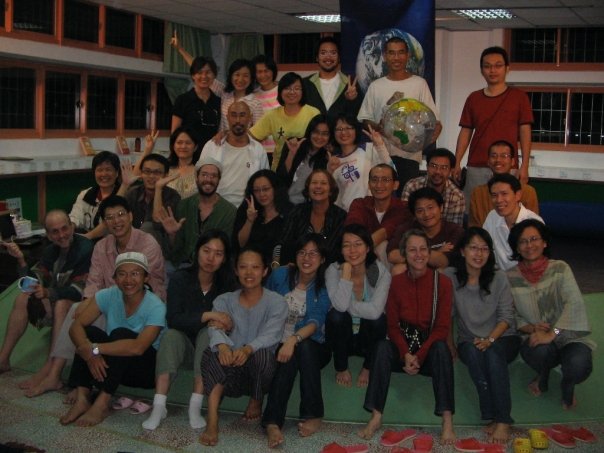
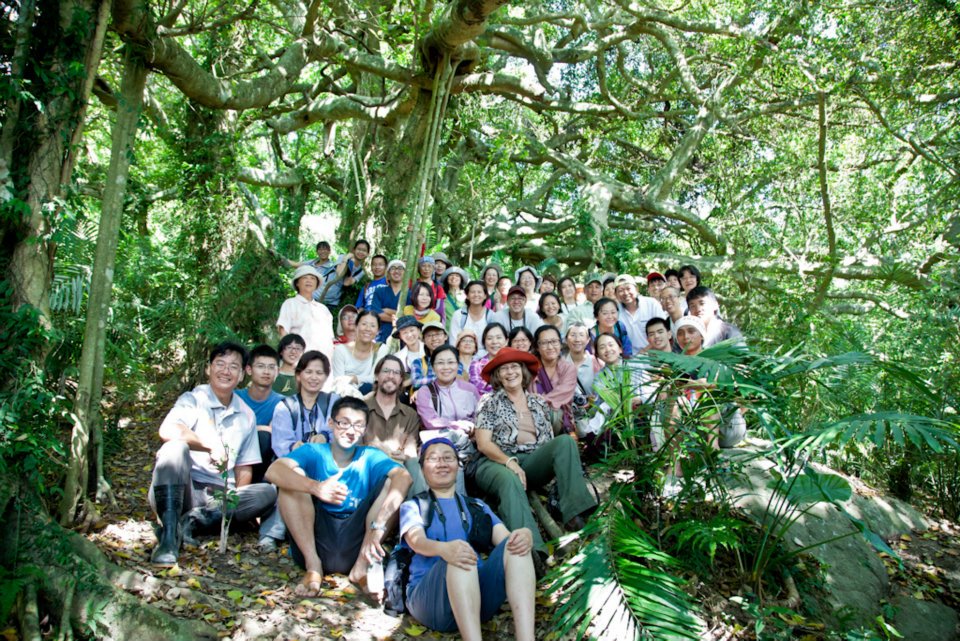
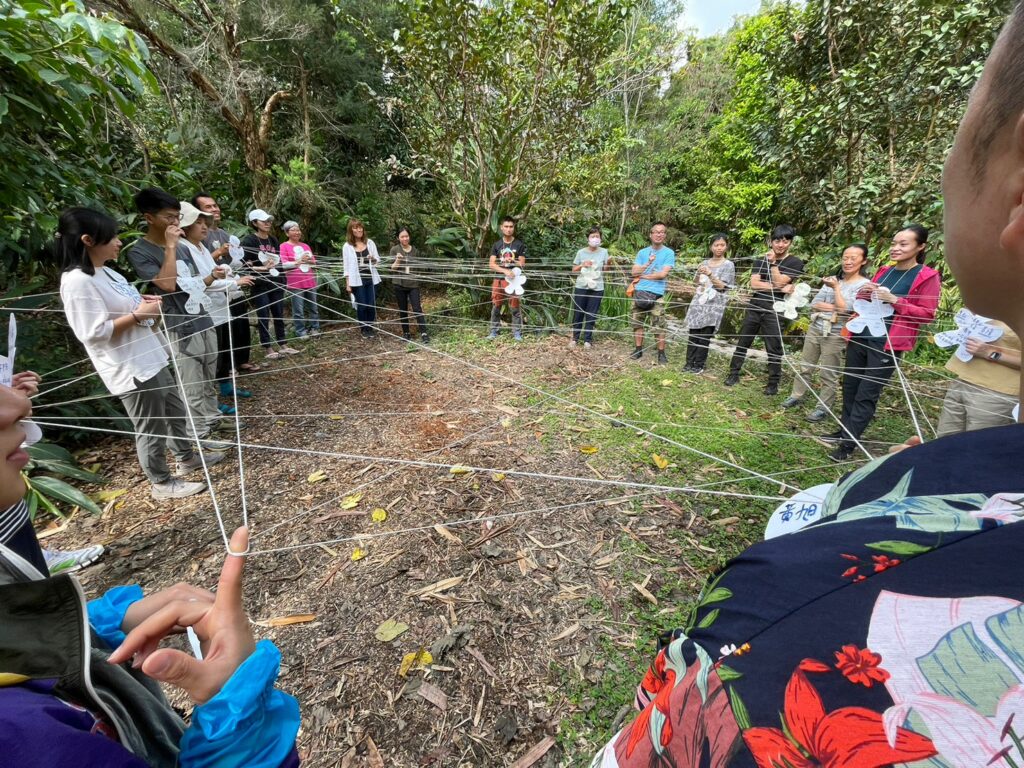
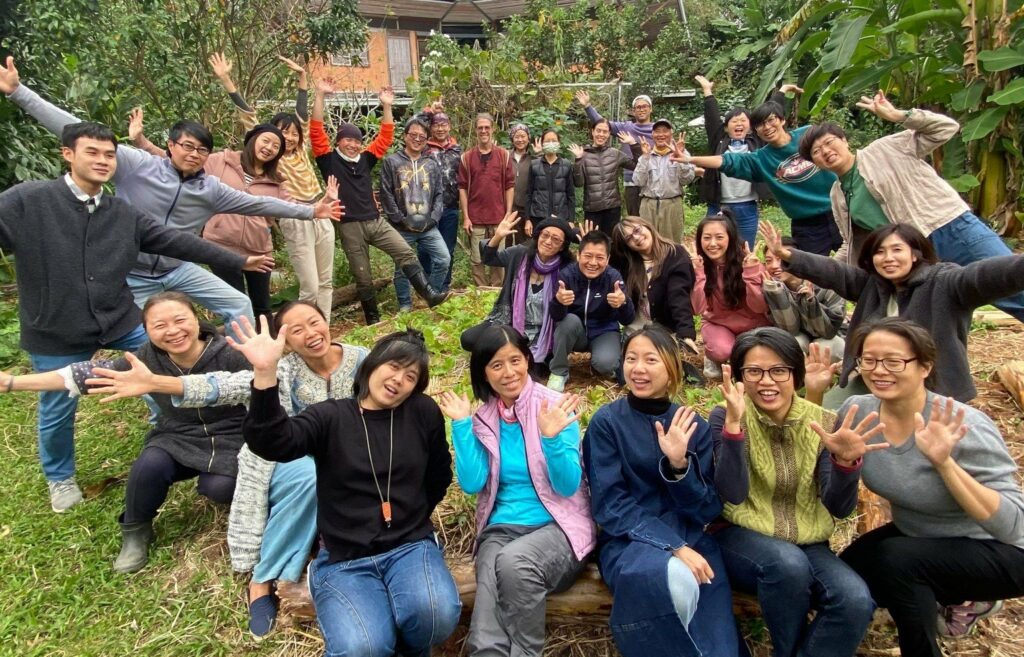
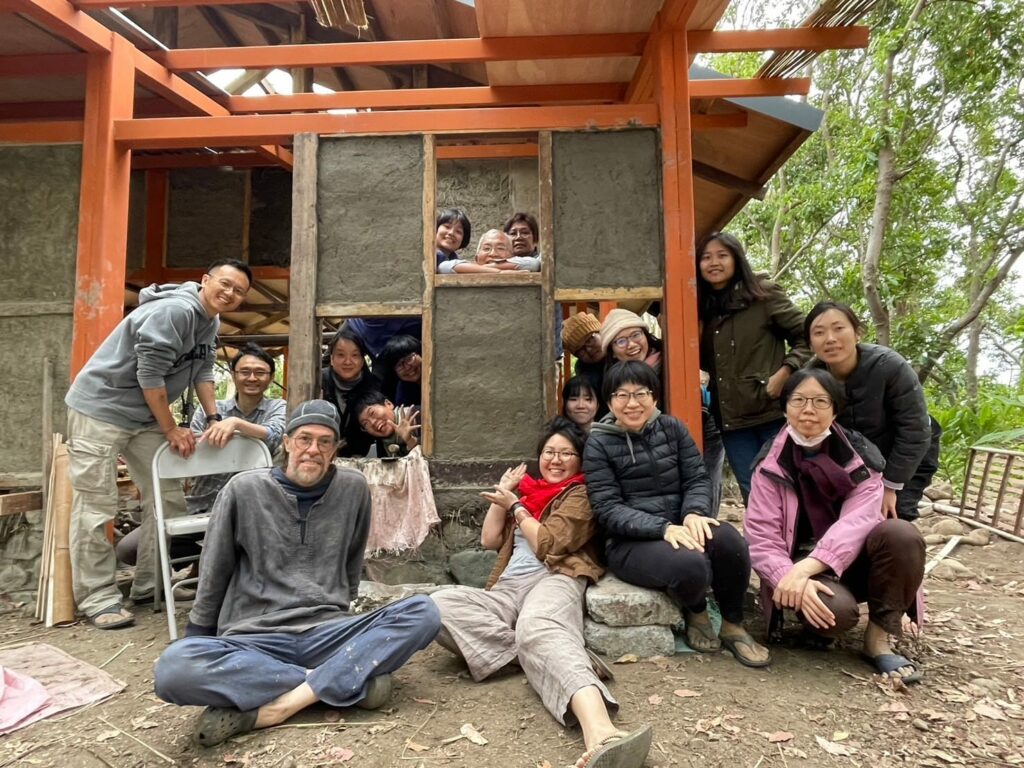
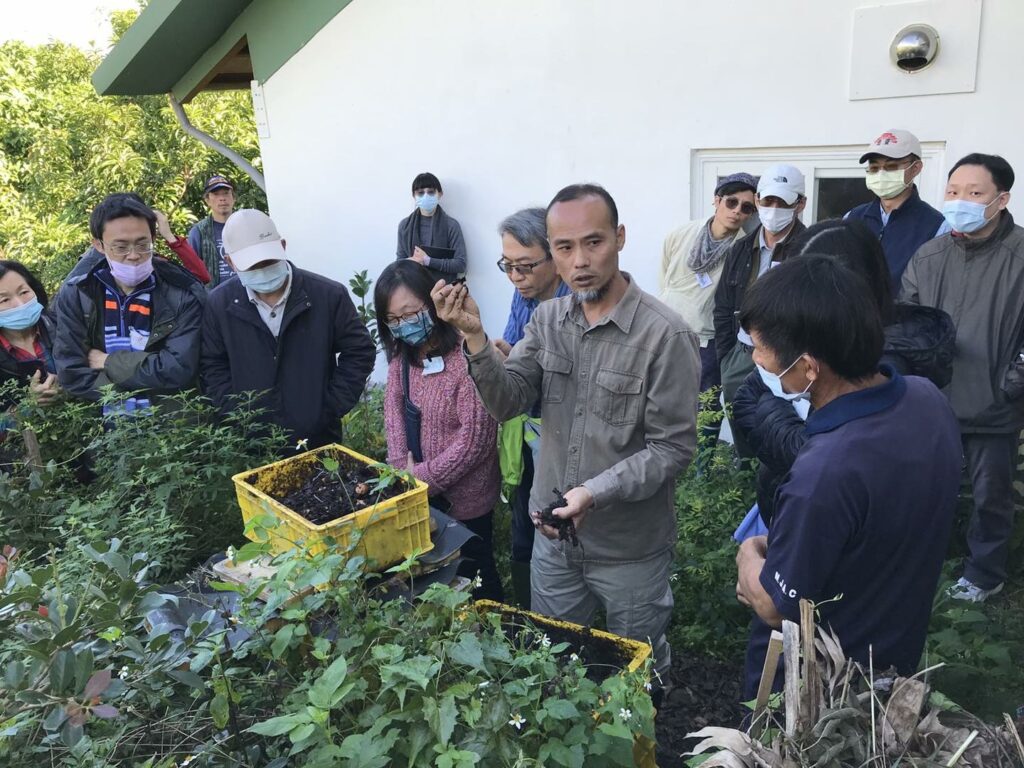
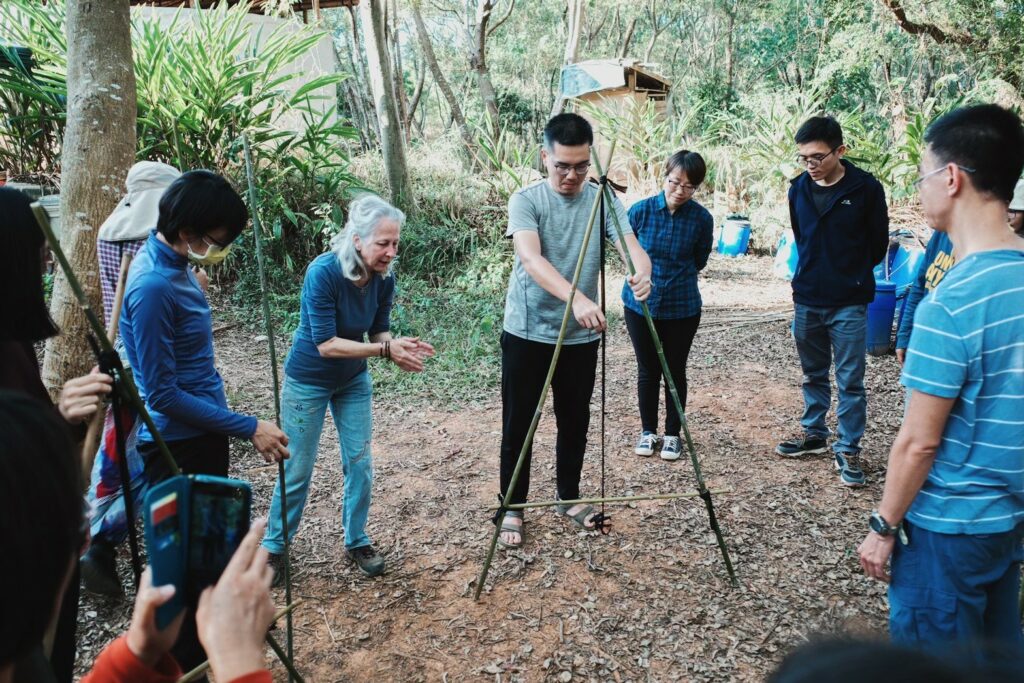
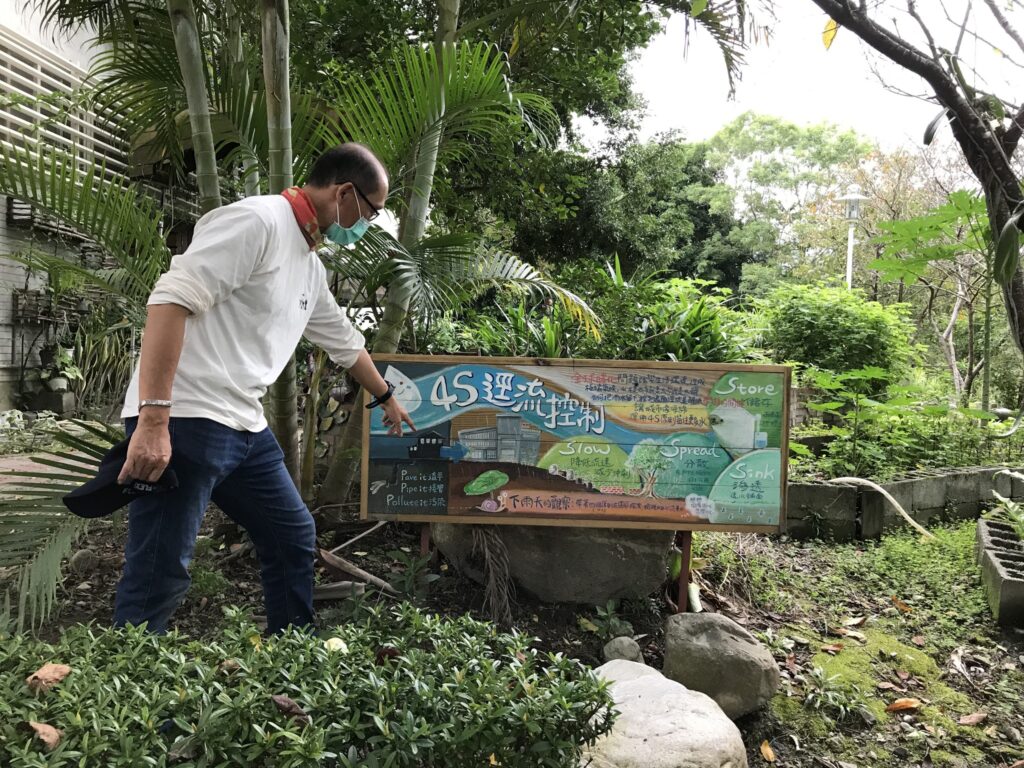
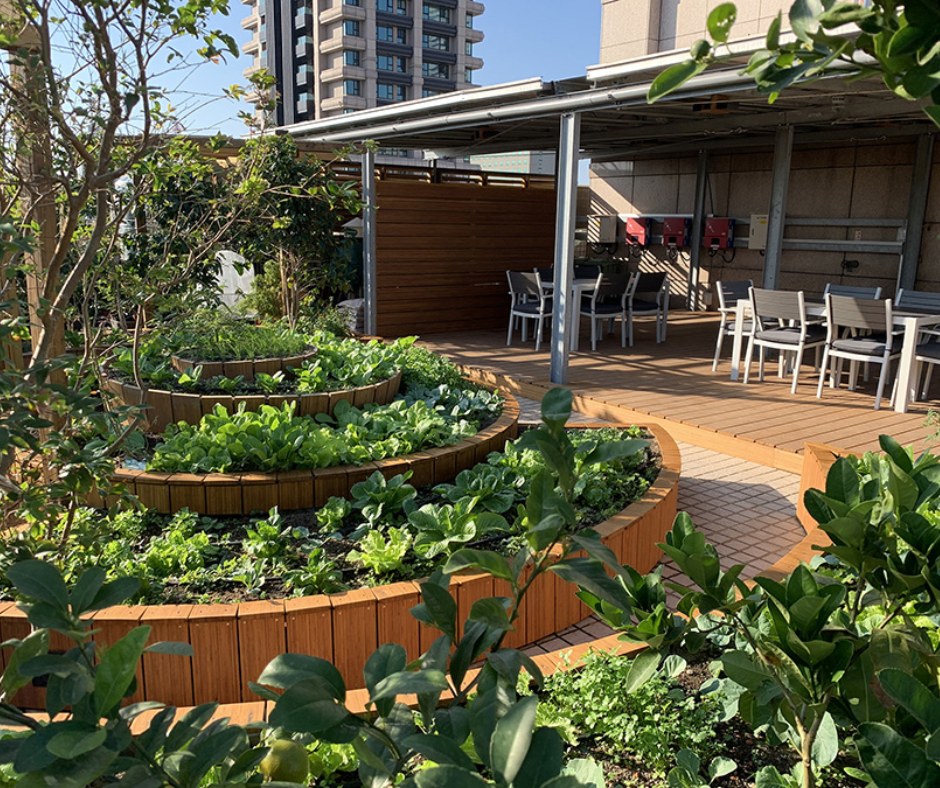
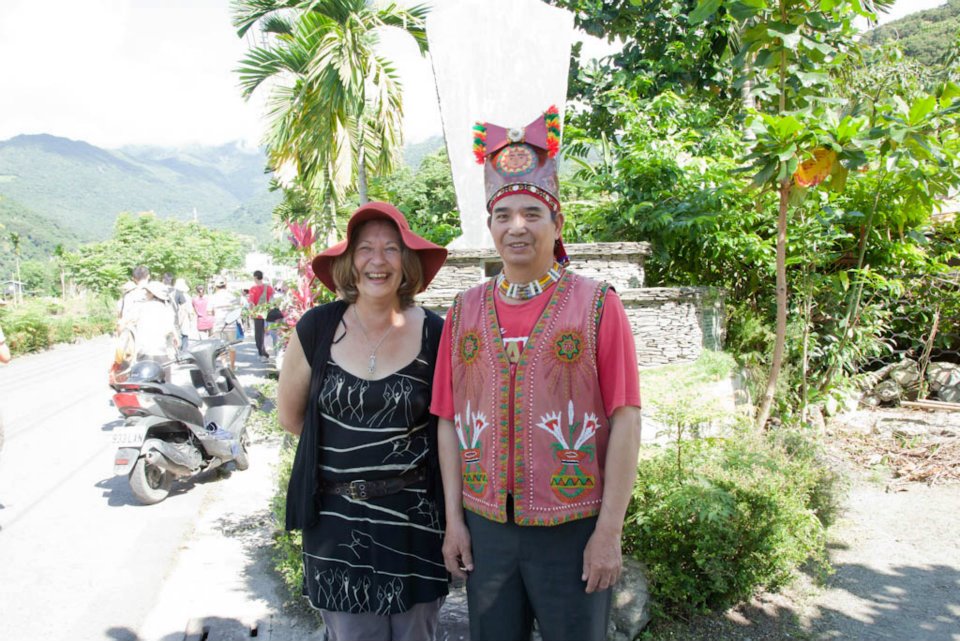

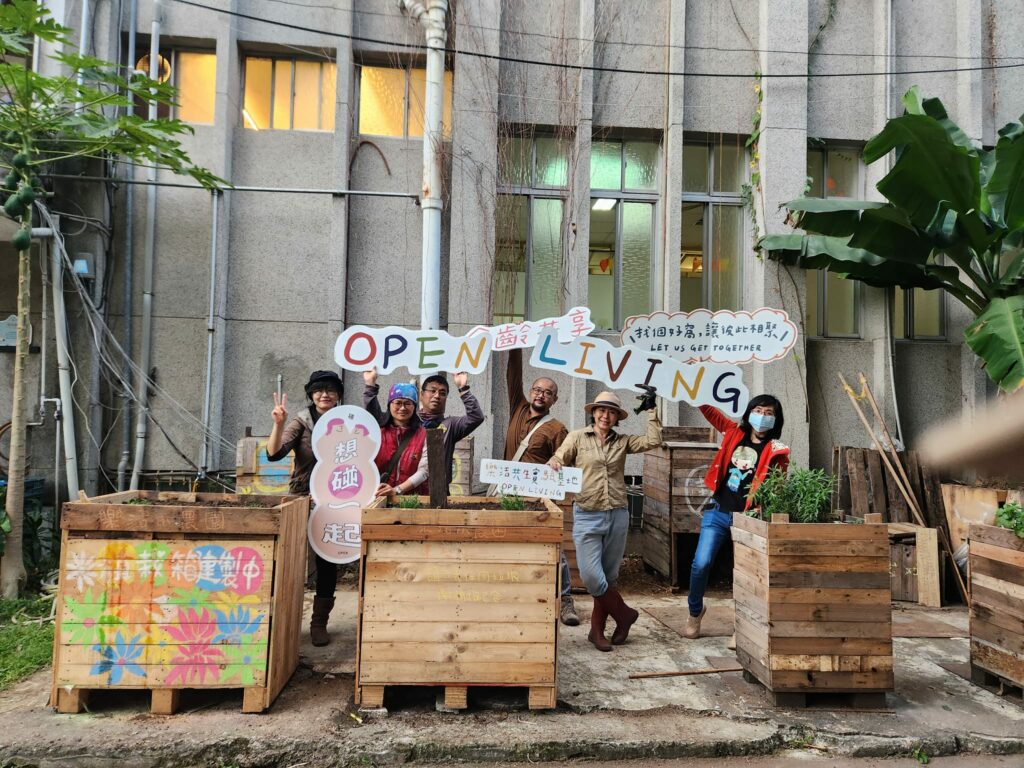
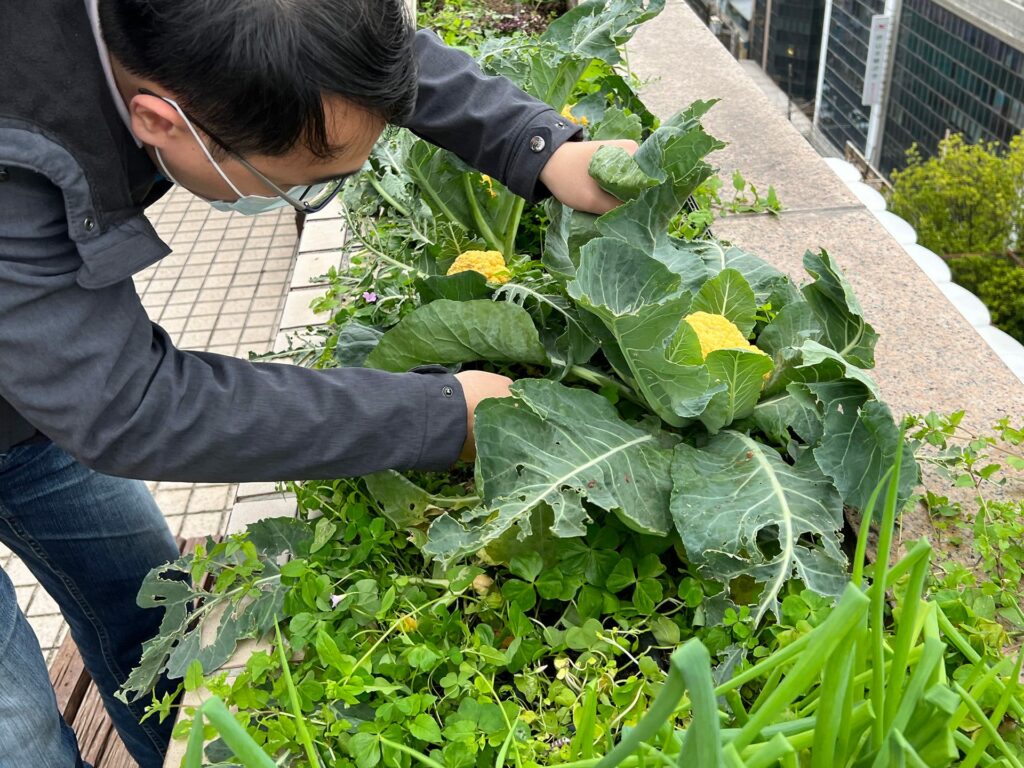
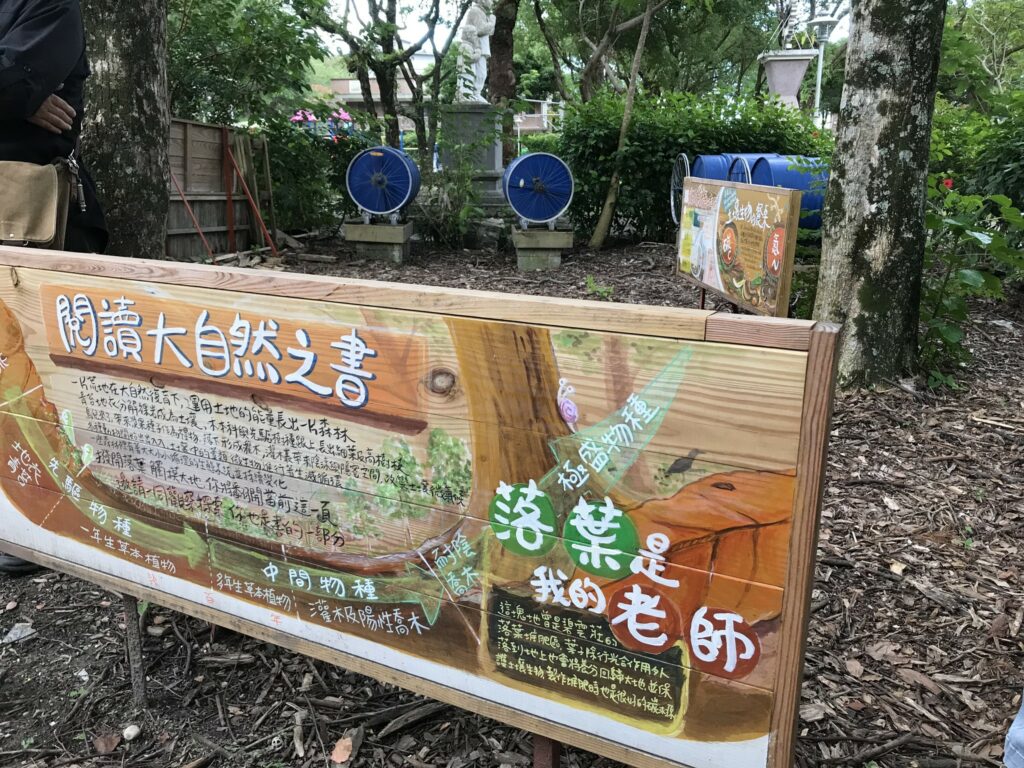
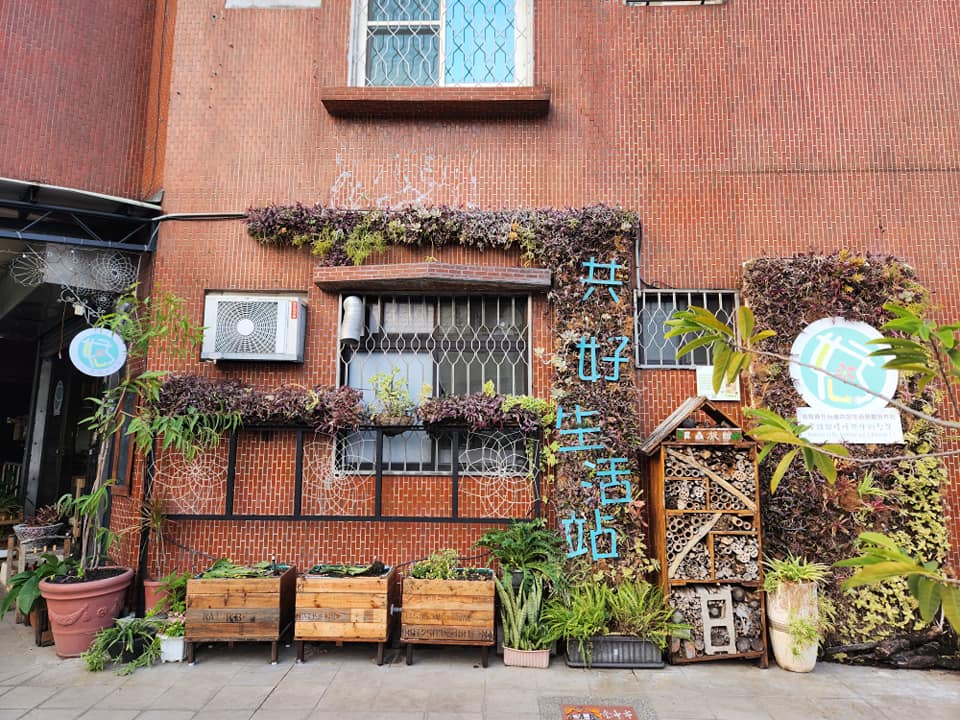
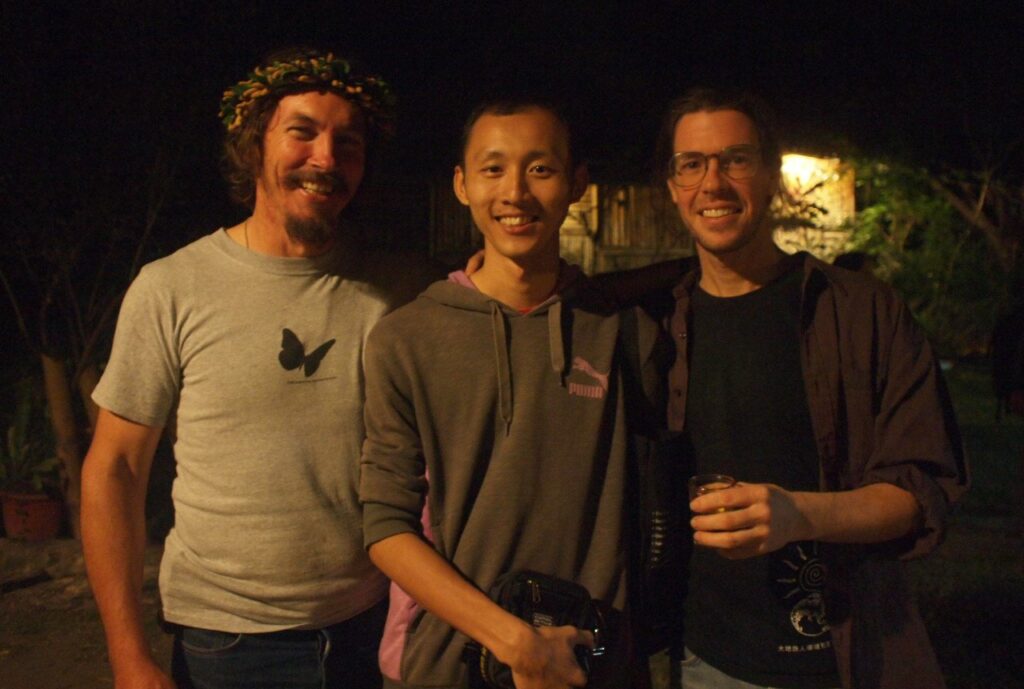
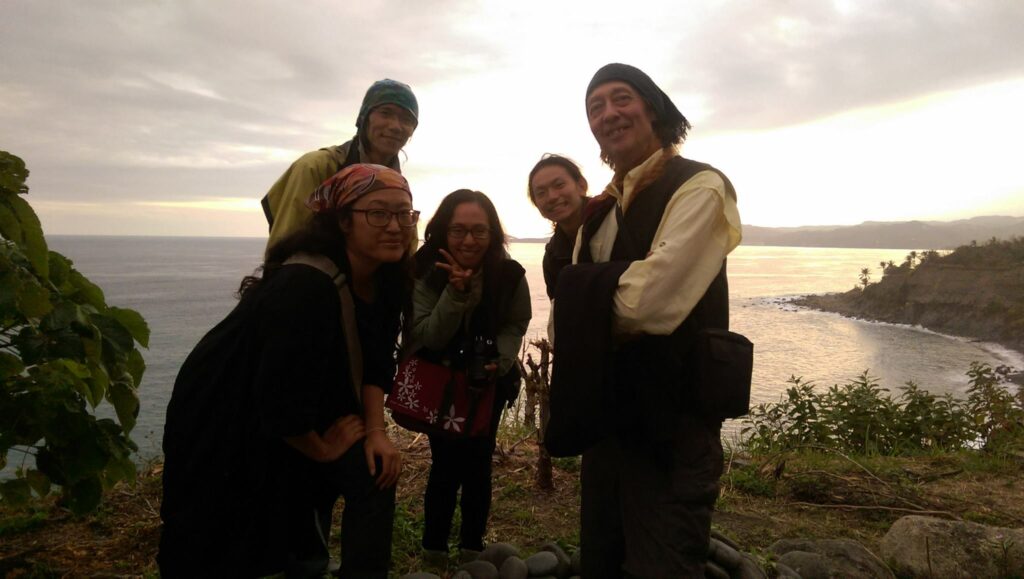
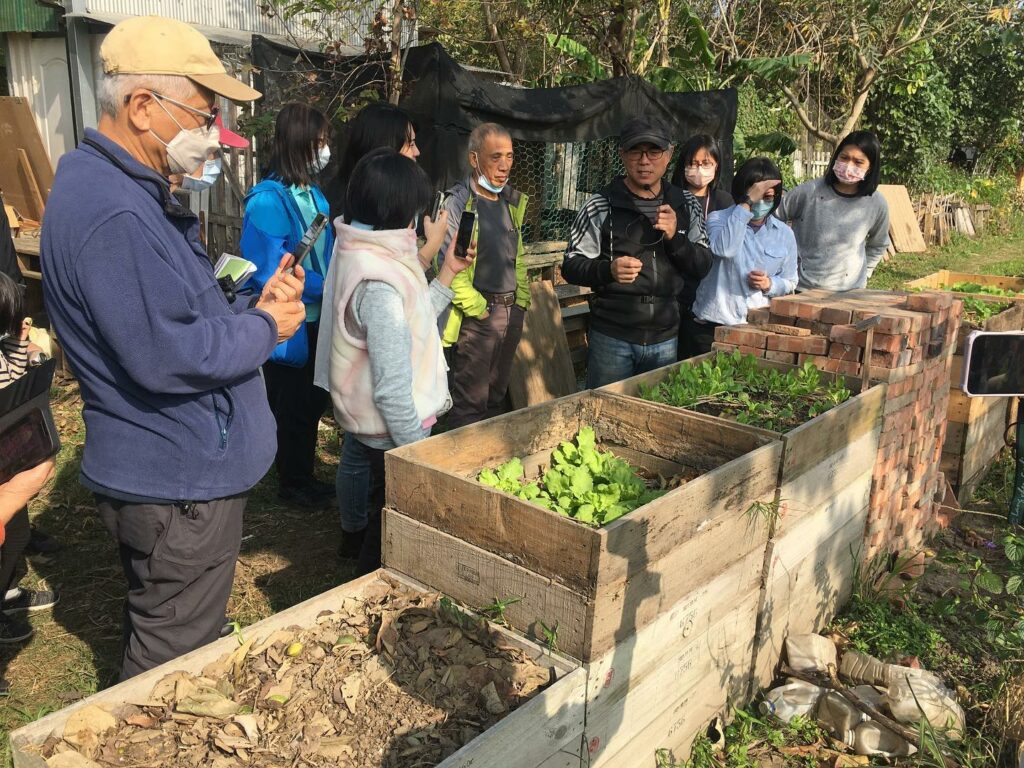
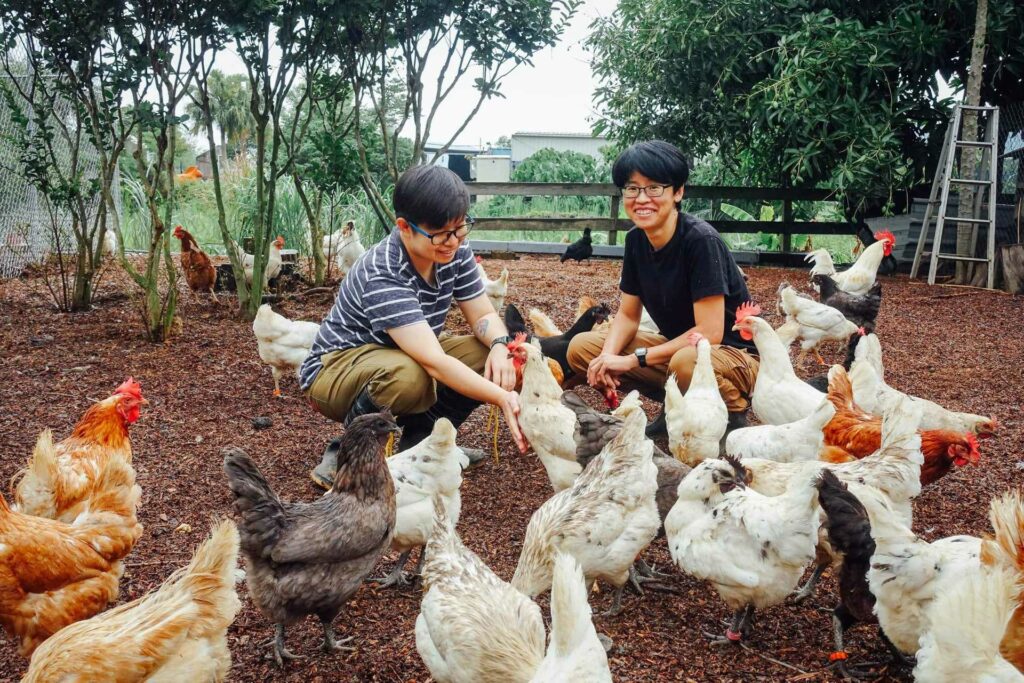
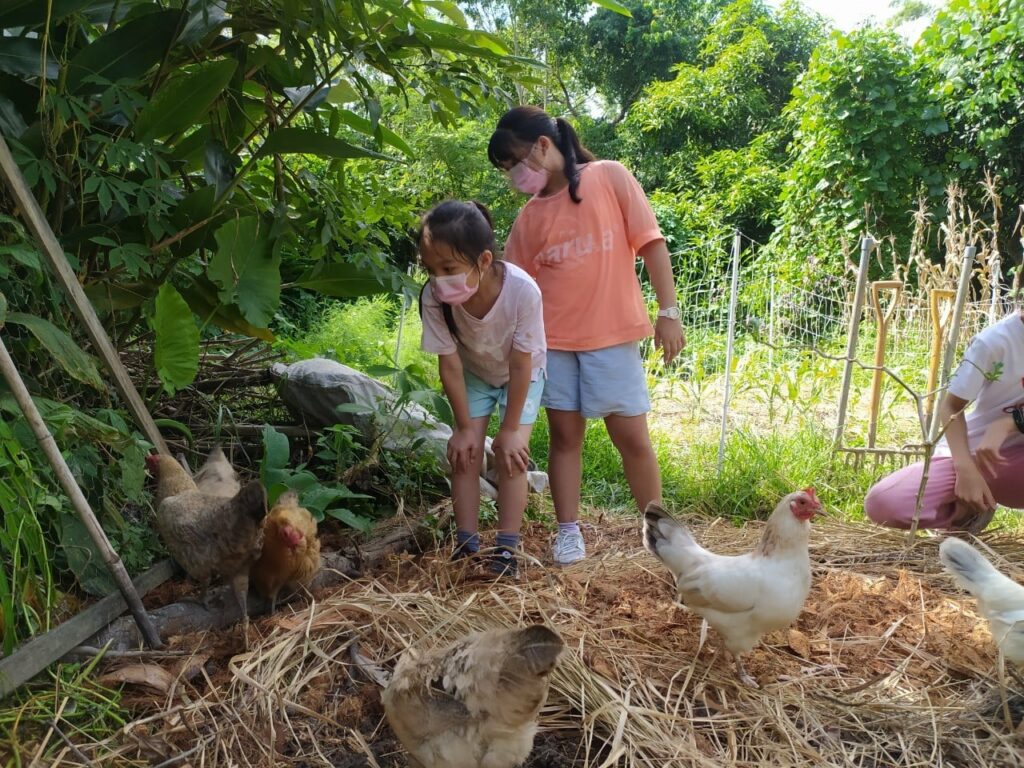
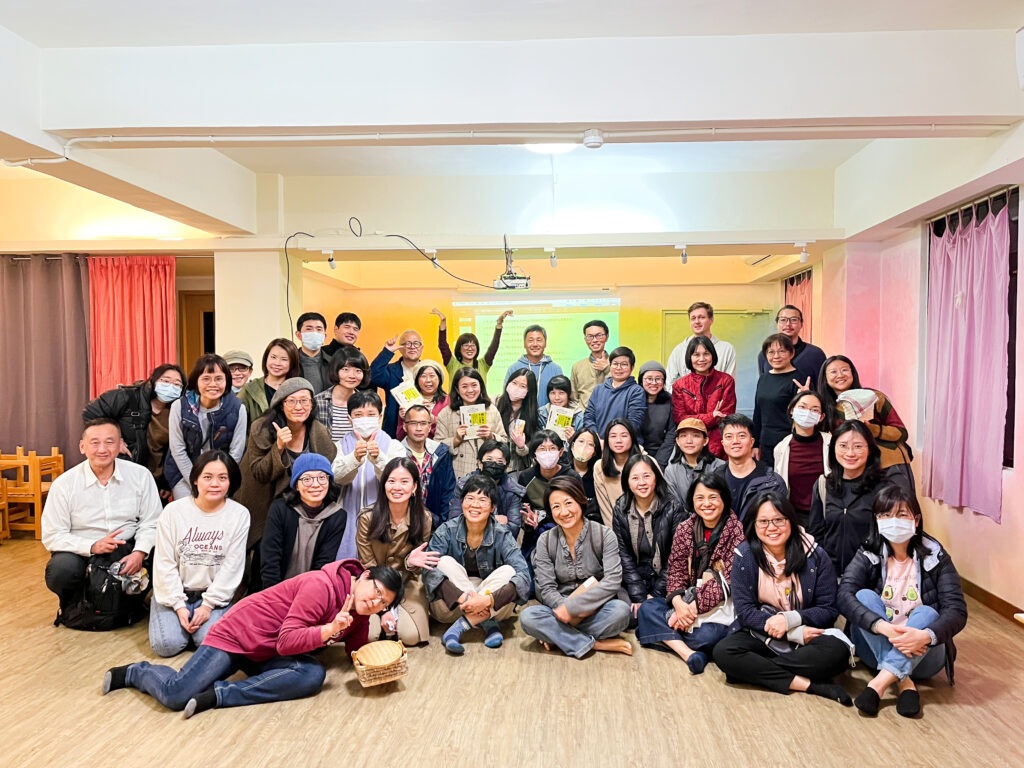
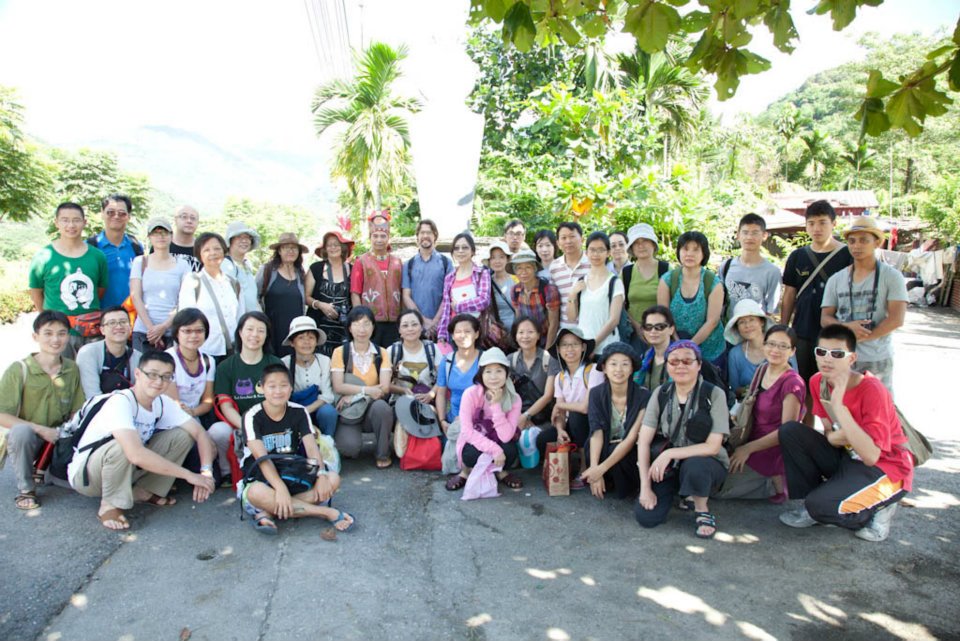


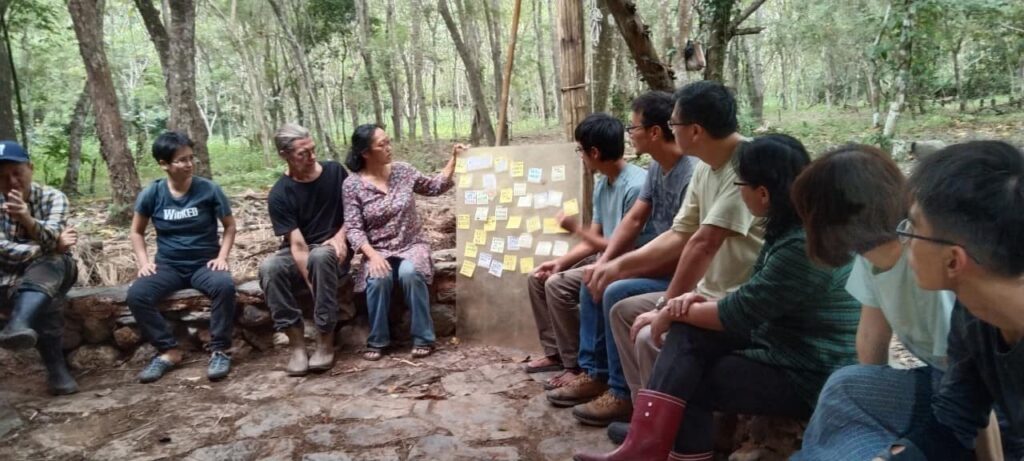
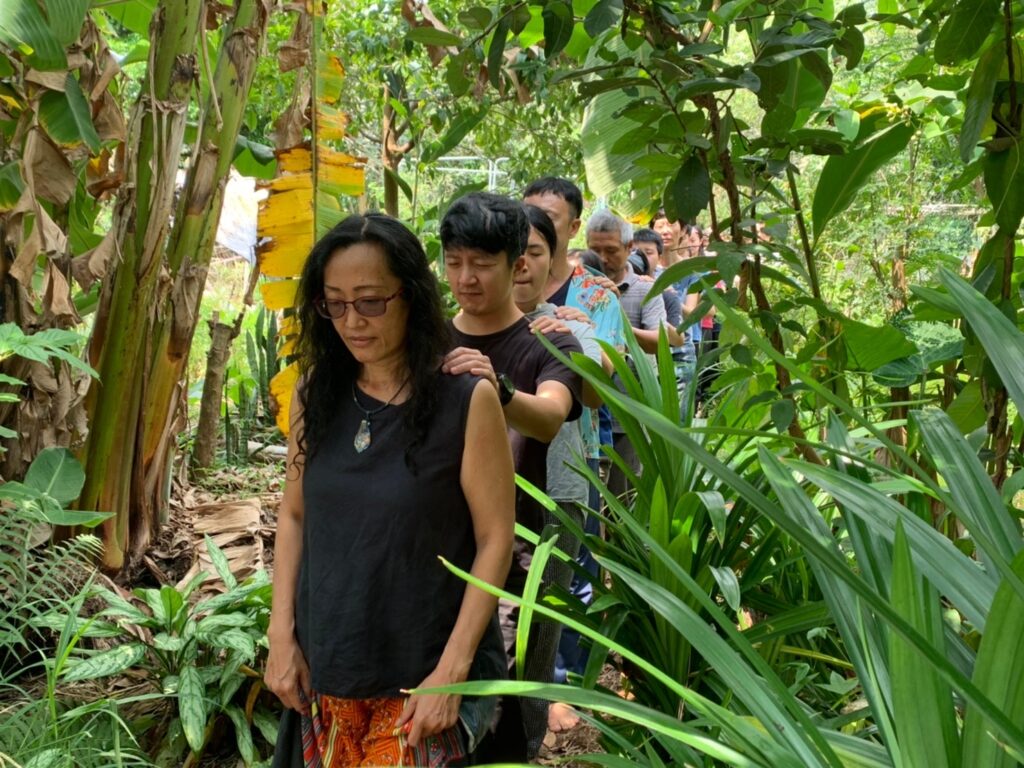
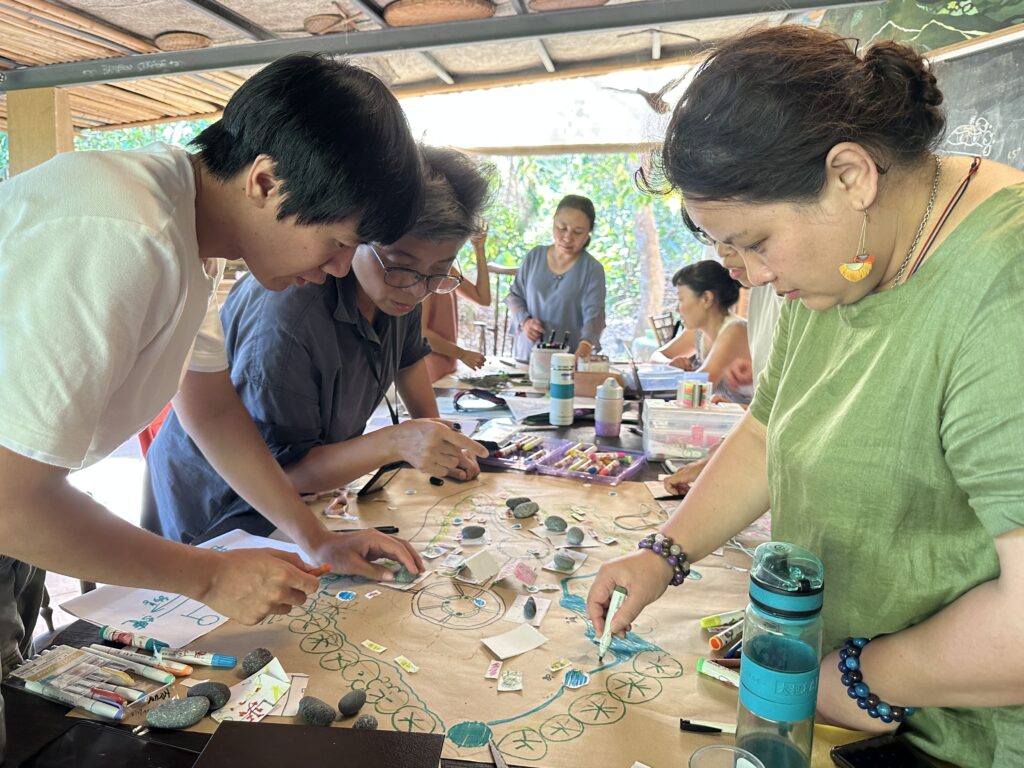
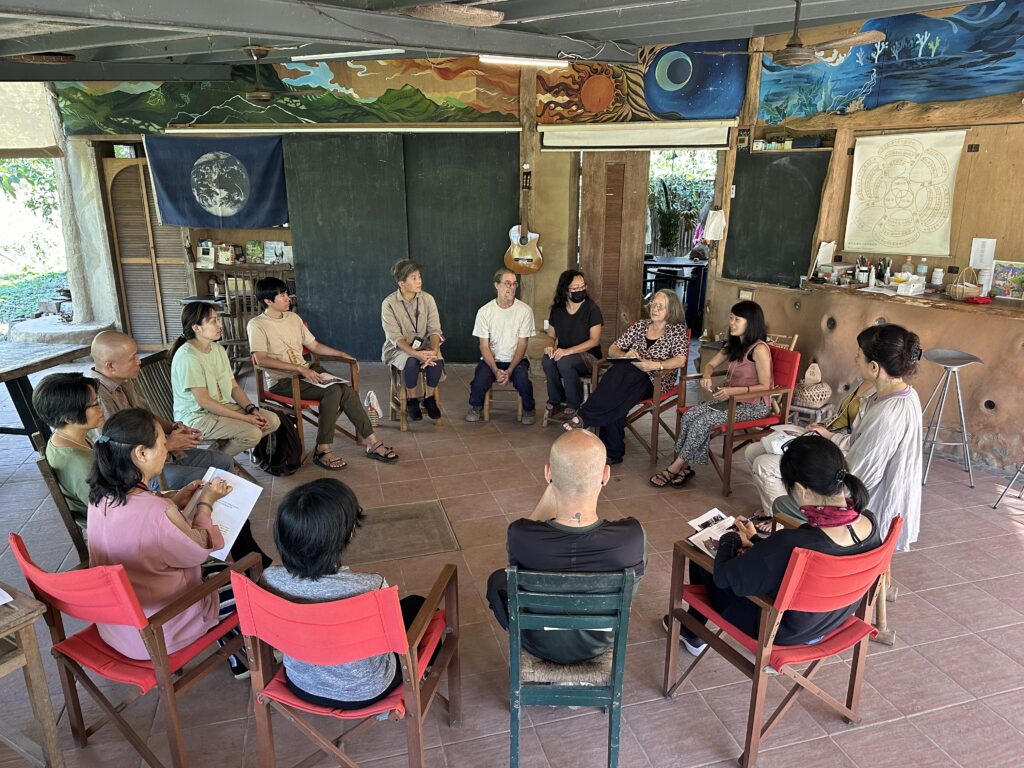
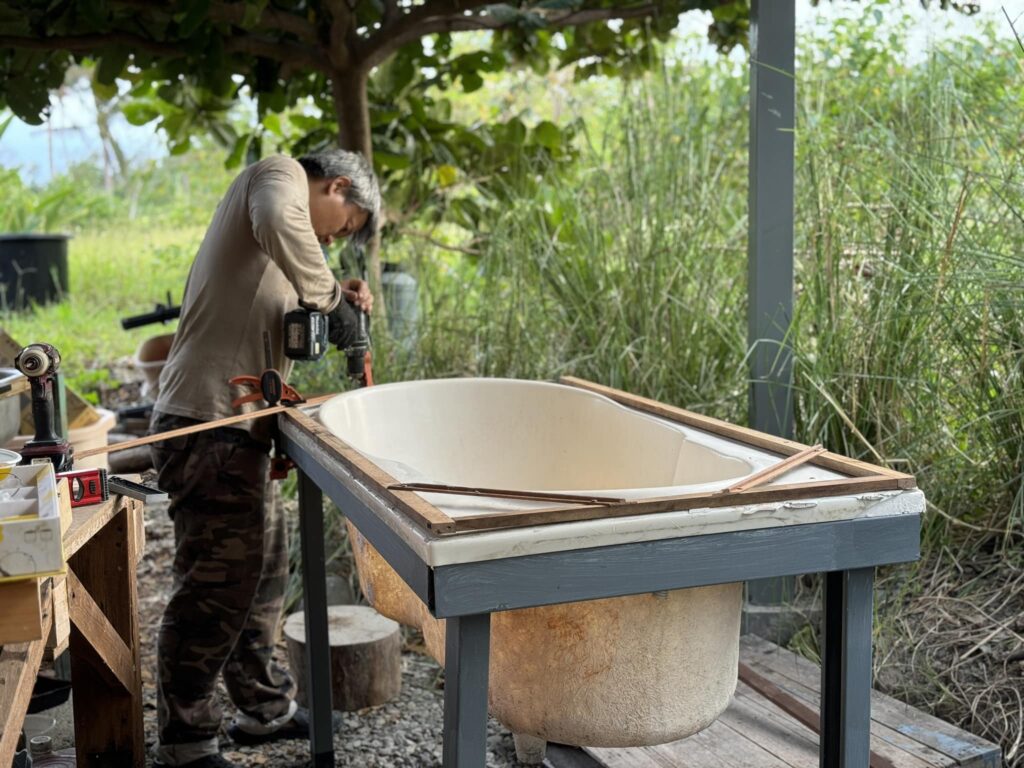
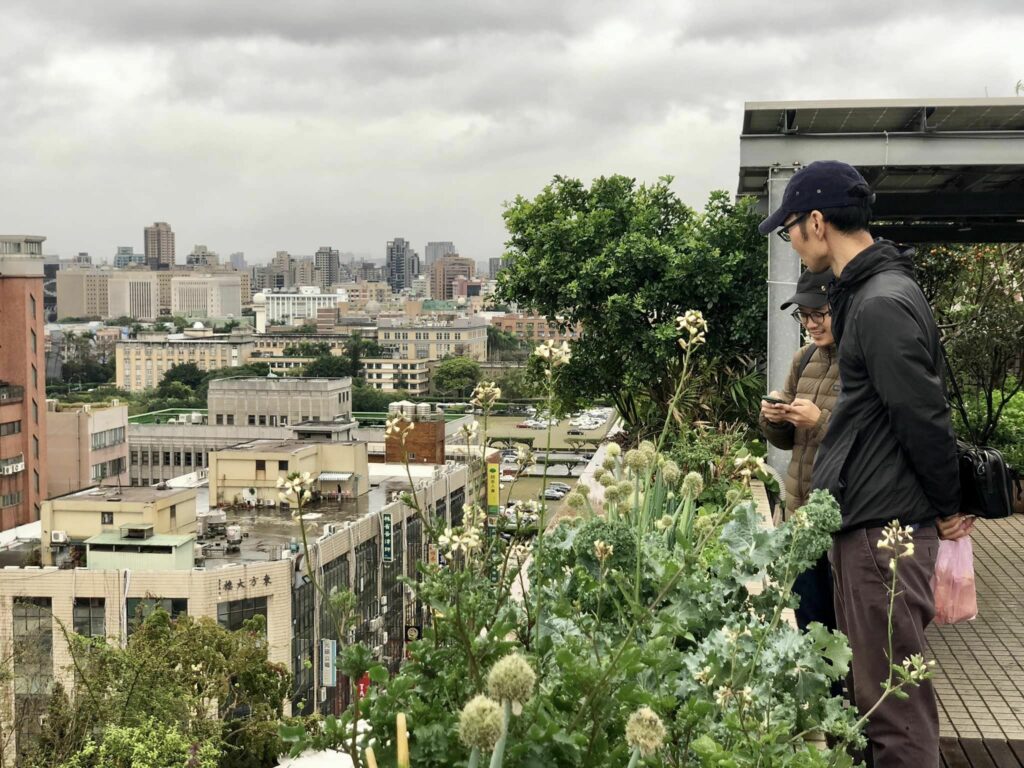
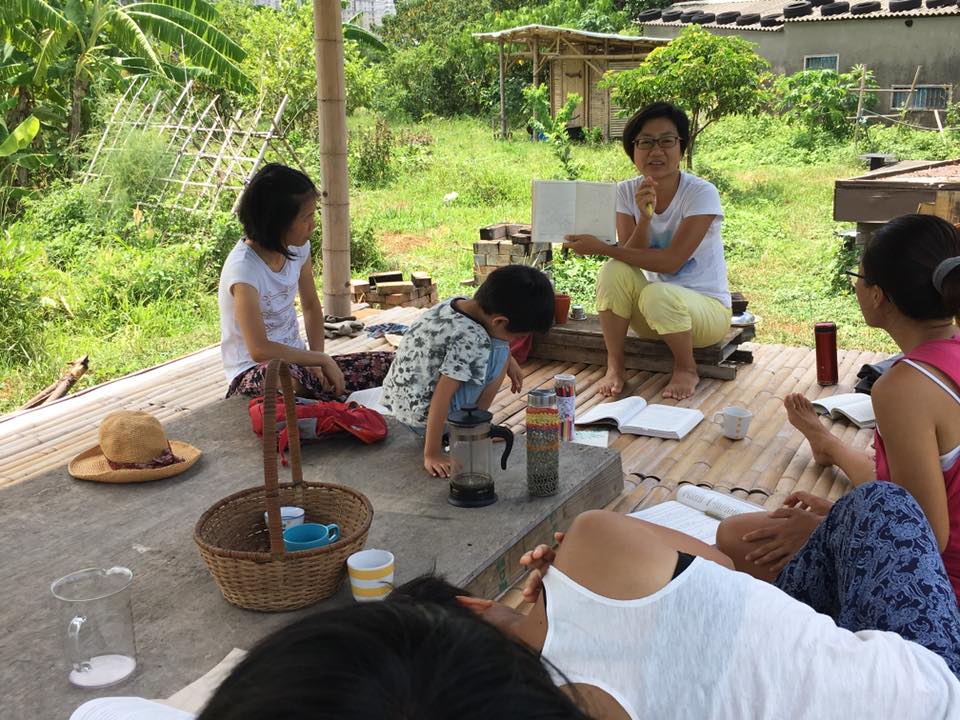
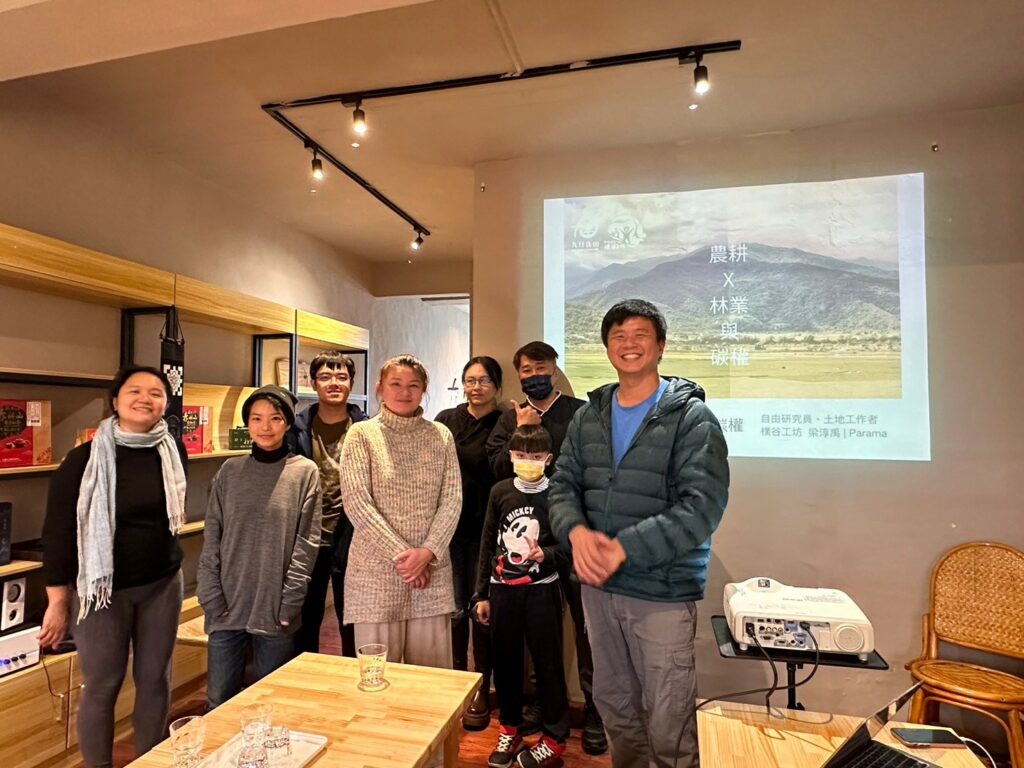
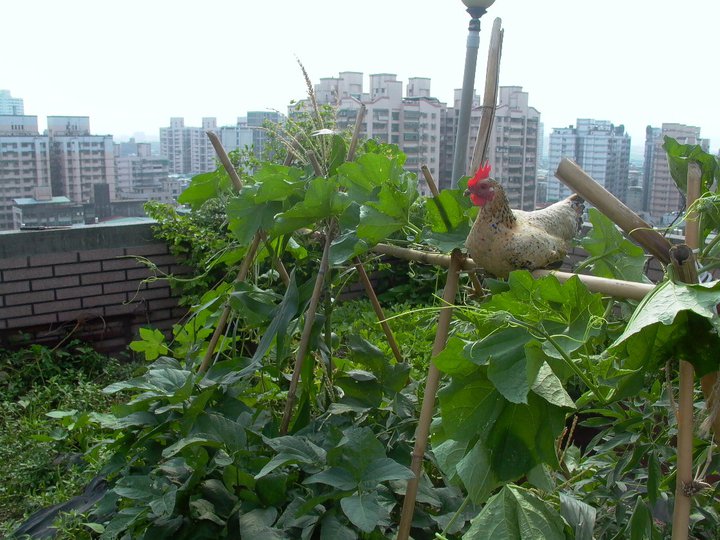
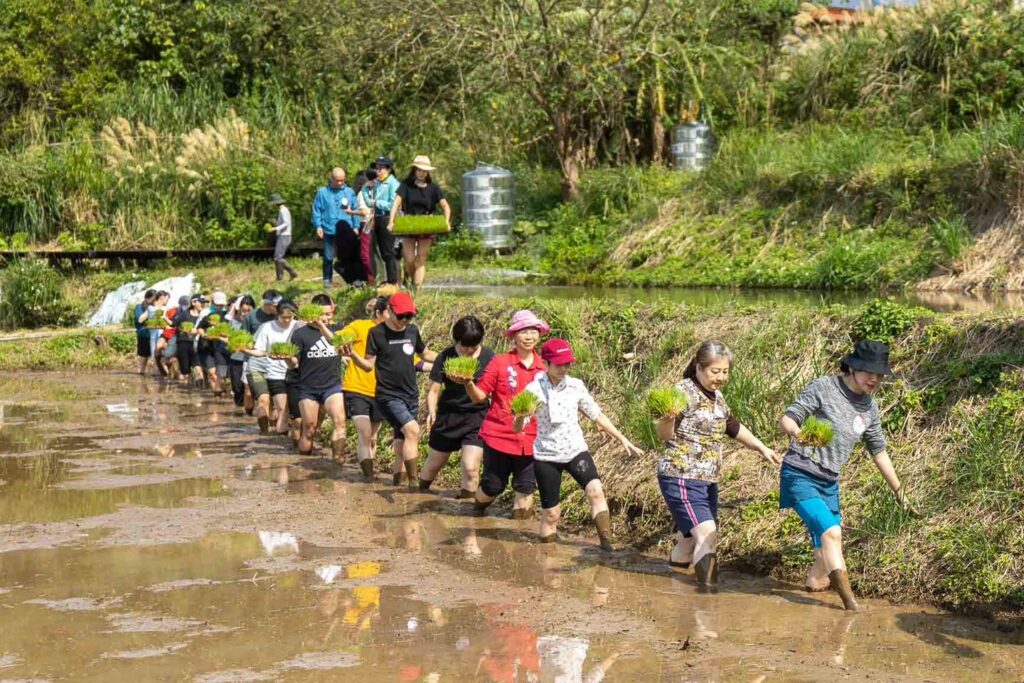
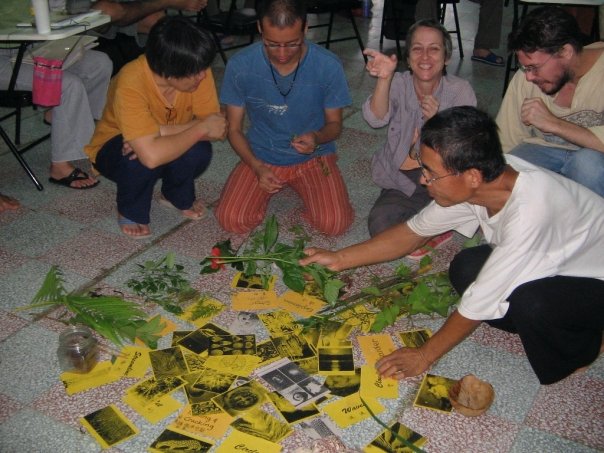
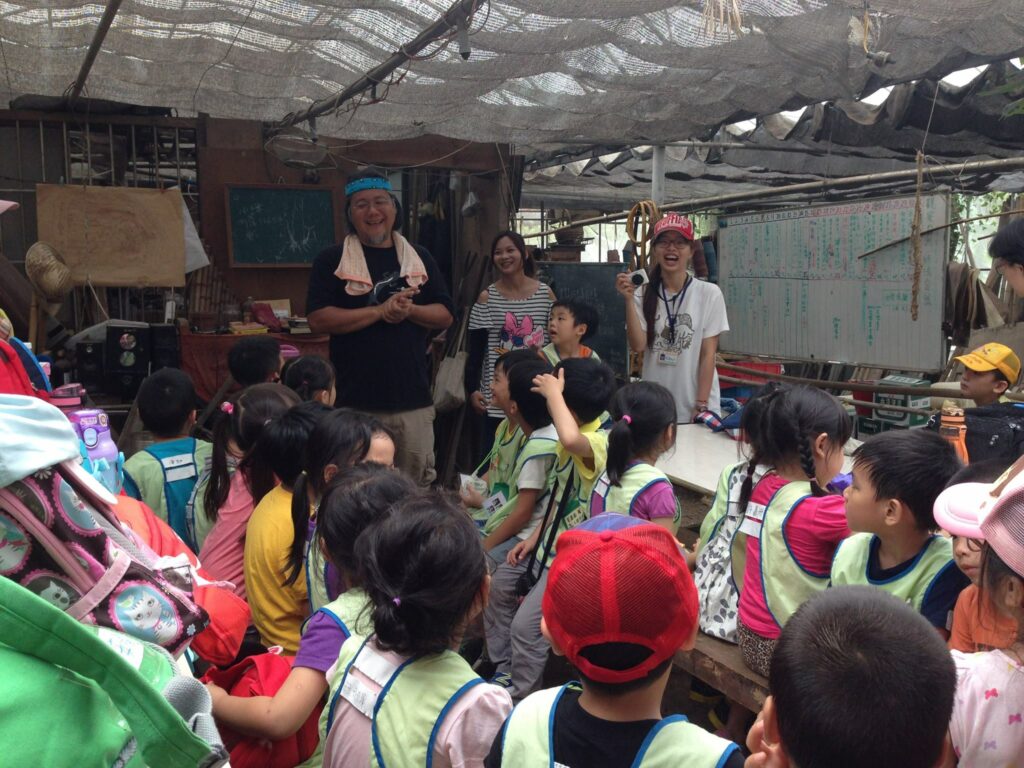



Permaculture was formally introduced into Taiwan in 2008 when Earth Passengers invited Robyn Francis (AUS) to teach the first Permaculture Design Course in Taiwan. However before that, there were already a small group of people who had heard and learned about permaculture from travelling abroad in USA and Australia and form a study group. Since the first PDC in 2008, permaculture concepts has been spread throughout diverse settings in Taiwan, and have many different faces of applications. There are many permaculture courses in community colleges (adult extension programs), PDCs and hands-on workshops being held in different parts of Taiwan by different permaculture teachers and practitioners. Permaculture has also been introduced to governmental agencies as further professional development courses, formal education systems such as elementary school teachers’s further education program. Permaculture concept is also taught in universities to students of different majors, such as landscape design, architecture design, agriculture, horticulture, and in general education programs. The photo gallery here shows permaculture practitioners and sites from different parts of Taiwan. List of permaculture sites in Taiwan (the information has been provided voluntarily by permaculture practitioners, therefore some may not be listed.)

